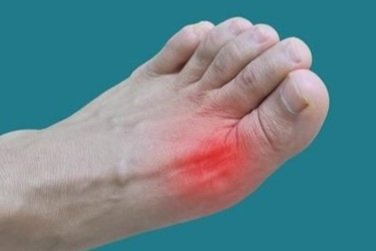Weather changes and their impact on arthritis pain have been a topic of interest for many. Many sufferers report variations in pain levels in response to changes in temperature, humidity, and atmospheric pressure. Here is more information on how these elements may influence arthritis pain and outlines potential explanations for why individuals may feel these effects:
Barometric Pressure and Joint Pain
Barometric pressure, also known as atmospheric pressure, refers to the weight of the air in the Earth’s atmosphere. Shifts in barometric pressure are commonly associated with weather changes, such as moving from dry to rainy conditions. Some individuals with arthritis report increased sensitivity in their joints during low-pressure conditions.
Low barometric pressure may lead to a slight expansion of soft tissues surrounding joints. This expansion could create increased tension in areas already sensitive due to inflammation, resulting in discomfort. Although the exact mechanism remains unclear, clinical studies suggest possible connections between barometric pressure variation and worsening symptoms in certain individuals. This sensitivity may differ depending on the type or severity of the person’s arthritis.
Temperature Changes and Stiffness
Cold temperatures are often linked to increased joint stiffness. Many individuals with arthritis describe experiencing more difficulty moving their joints on colder days. Reduced temperatures may cause muscles, tendons, and surrounding joint tissues to tighten, reducing flexibility and forcing joints to work harder.
Cold weather may also indirectly amplify arthritis-related discomfort. People living in colder regions are less likely to remain physically active, causing joints to stiffen further. Blood circulation also slows in colder weather, which may limit the movement of nutrients and oxygen to areas affected by arthritis, intensifying discomfort. Sudden exposure to heat may not necessarily alleviate pain. While heat can temporarily increase circulation and promote muscle relaxation, extreme heat combined with higher humidity may exacerbate fatigue and inflammation symptoms for some individuals.
Humidity and Joint Swelling
Humidity levels commonly fluctuate with seasonal patterns or geographic regions. Elevated humidity can influence the amount of swelling around joints by intensifying feelings of heaviness or tightness. Due to increased moisture in the air, body tissues may retain more fluid, leading to sensations of pressure or crowding around arthritic joints. These occurrences may be more pronounced in individuals with advanced arthritis or underlying circulatory challenges.
High humidity combined with warm temperatures can also amplify physical discomfort by increasing perspiration rates and contributing to dehydration. When the body becomes dehydrated, the lubrication within the joints, known as synovial fluid, reduces effectiveness. While dehydration does not cause arthritis, it may intensify existing symptoms.
Managing Arthritis Sensitivities
Although individuals cannot control weather conditions, understanding their influence on arthritis symptoms can help manage the condition more effectively. Activities that promote joint flexibility and improve muscle strength, such as light stretching or regular movement, may reduce weather-linked discomfort. Keeping joints warm in colder months or staying hydrated during humid seasons can also contribute to greater physical comfort.
While no weather can ultimately dictate arthritis pain, weather-sensitive individuals may notice improvement with simple adjustments to daily habits. Consult a healthcare provider if symptoms appear aggravated to explore additional symptom management strategies. Recognizing the connections between weather changes and arthritis pain equips individuals with the knowledge to proactively approach their condition and environment.
